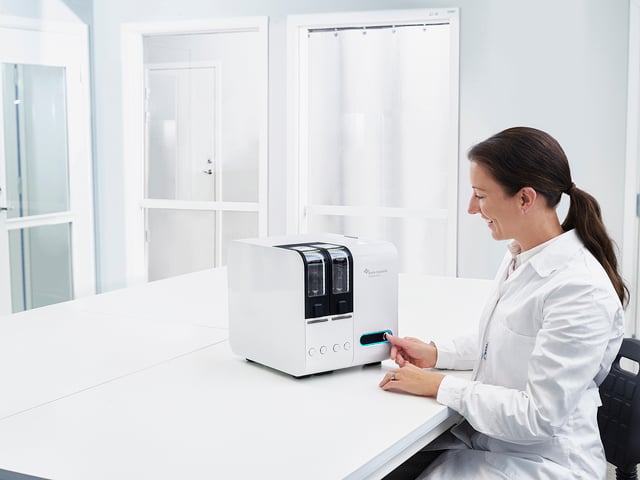
To collect high-quality QCM-D data, it is important to pay careful attention to the entire process of measurement preparation, setup, and execution.
To learn more about the best practice procedures, I interviewed my colleague, Jennie Ringberg, Technical product manager for QSense. Jennie described the five steps of QCM-D measurement preparation and execution. In this post I share what I learned about step 4 – Running the experiment.
To get the most out of your QCM-D your measurement in terms of data quality and reproducibility, there are several aspects to pay attention to. The measurement setup and execution could be divided into five steps:
In previous blogposts, we have talked about steps 1-3, i.e., sensor preparation, preparation of sample liquids, and setting up the measurement. In this post we continue with step 4 and look at what is important to consider when running the experiment.
A successful measurement starts already before the measurement execution by careful planning of the experiment in advance, Jennie says. The steps that you plan to include in your measurement should be designed in a clever way. For example, you should have considered potential bulk effects and how to minimize or avoid those, she says.
It is also good to consider how to make the most of the experiment that you will spend time setting up, Jennie continues. For example, perhaps it will be possible to use the mounted sensor for multiple purposes, i.e., in different kinds of analysis. Let us say for example that you are working in the detergent industry. Then maybe you start by analyzing the soil removal from the sensor, and then as the stain has been removed, you continue to study etching of the same sensor.
Another important aspect to consider when you are planning the experiment is to always ask yourself beforehand what kind of information that you plan to extract from the measured data, Jennie says. How do you plan to do the analysis? And what requirements will the data need to fulfil for that kind of analysis to be performed? For example, is the baseline stable so that you can draw conclusions on the shifts? Or if you plan to do viscoelastic modelling, are you including all the different harmonics? These aspects need to be considered and planned for beforehand, and not once the measurement has already been terminated, Jennie stresses.
During the measurement, I would really recommend taking notes in the software, Jennie says. There is a feature in the software that creates a timestamp which is useful to keep track of when different samples were inserted etc. The timestamp is of course useful in general to keep track of your measurement protocols, but it is especially useful if you plan to use Dfind to analyze your data afterwards. Dfind can import the time stamps automatically and split the measurement into the different periods of the sample sequence which facilities the data analysis. So, use the timestamp button in the software and then manually add some notes on what happened at this point in time, for example “injection of Sample A”, Jennie says.
If you want to learn more about QCM-D measurement best practice, listen to the interview with Jennie as she shares some tips and tricks in the pod episode Collecting quality data with QCM-D – what to consider and pitfalls to avoid.
Learn best practices and step-by-step methods for accurate QCM-D coating thickness measurement on QSense sensors using QSense Omni.
Compared to QCM, QCM-D measures an additional parameter, and provides more information about the system under study.
Discover how QCM-D analysis reveals real-time etching dynamics, helping optimize cleaning processes and protect surfaces from unwanted damage.
Discover how QSense QCM-D helps tackle fouling challenges across industries
Discover how QCM-D enables real-time, label-free analysis of supported lipid membrane formation, structure, and dynamics for advanced research
Learn how QSense QCM-D analysis can reveal membrane fouling dynamics and optimize cleaning strategies for more efficient water treatment
Learn how QSense QCM-D helps detect and prevent surface-induced instabilities in biologics. Join our webinar for insights and practical examples.
Learn about the top QSense sensors for analyzing biopharmaceutical drug-surface interactions in the context of IV bags.
Learn about QCM-D, Quartz Crystal Microbalance with Dissipation monitoring - an analytical tool for surface interaction studies at the nanoscale.
